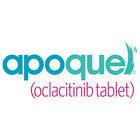How to Store Crickets for Reptiles
Are you struggling to keep your live crickets healthy and thriving? Crickets are more than just a food source for your pets; they play a vital role in maintaining the health of your reptiles and other insectivorous animals.
Crickets are a staple in the diet of many reptiles, amphibians, and birds. Their high protein content makes them an excellent choice for maintaining your pets’ health. Proper cricket care is essential not only for the well-being of the crickets but also for the animals that depend on them for nutrition.
However, crickets can quickly die without proper care, which leads to unnecessary expenses and inconvenience.
In this guide, we'll explore why crickets are popular as feeder insects and provide comprehensive care tips to ensure your crickets remain healthy and active. Here, you will also get the essential knowledge, from understanding their life cycle to setting up the perfect habitat and ensuring they receive the right nutrition and hydration. We'll also discuss the best products to make your job easier and more efficient.
But, before that let’s have a look at some shocking facts about live crickets:
Some Shocking Statistics
- Weekly Shipments: The cricket pet food industry in the United States ships as many as 50 million crickets per week, highlighting the significant scale of the industry. This is a multimillion-dollar business primarily supplying food for reptiles and other pets.
- Market Growth: The crickets market is projected to reach $3.5 billion by 2029, growing at a compound annual growth rate (CAGR) of 28.6% from 2022 to 2029. This growth is driven by increasing demand for cricket-based food products and their high nutritional value. (Source)
- Pet Ownership Trends: The demand for crickets surged during the COVID-19 pandemic, coinciding with a rise in pet ownership, particularly reptiles, which require crickets as food. Reports indicate that demand remains 30% higher than pre-pandemic levels.
Basic Biology and Life Cycle of Crickets
To care for crickets effectively, it’s essential to understand their basic biology and life cycle. Let’s break it down:
Cricket Species
The house cricket, or Acheta domesticus, is the most common species used as feeder insects. They are popular due to their high nutritional value and relatively easy breeding process.
Life Stages
1. Egg: Female crickets lay their eggs in a moist substrate like damp soil or sand.
- Quantity: Each female can lay between 50 to 100 eggs at a time, potentially hundreds throughout her life.
- Appearance: Cricket eggs are tiny, white, and oval-shaped, similar to grains of rice.
- Incubation: The eggs typically take 8-10 days to hatch, depending on environmental conditions.
- Growth: Nymphs go through several molts (shedding their exoskeleton) as they grow, each stage between molts is called an instar.
- Duration: This phase lasts about 5-6 weeks, during which they molt 6-8 times before becoming adults.
- Care Tips: During this stage, nymphs need a stable, warm environment and consistent access to food and water.
- Lifespan: Adult crickets live for about 2-3 months.
- Behavior: They are more active and may chirp, a behavior used to attract mates.
Natural Habitat:
- Crickets are typically found in warm environments with plenty of hiding places.
- They prefer grassy areas, under rocks, and in crevices.
- Crickets thrive in temperatures between 75-85°F and require a humid environment to prevent dehydration.
Lifespan: The average lifespan of a cricket from egg to death is around 8-10 weeks, although this can vary based on care and environmental conditions.
Feeding and Hydrating Your Crickets - Best Practices
Proper nutrition and hydration are crucial for maintaining healthy crickets. This section covers everything from the best foods to feeding schedules and homemade cricket food recipes.
1. Best Foods for Crickets
Crickets need a balanced diet to stay healthy. Here are some of the best foods:
- Chicken Feed: Provides essential proteins and nutrients.
- Grains: Oats, wheat bran, and cornmeal for carbohydrates.
- Fruits and Vegetables: Apples, oranges, carrots, and leafy greens for vitamins and minerals.
2. Feeding Schedule
Feed your crickets every 1-2 days. Ensure fresh food is always available and remove uneaten food to prevent mold.
Gut-Loading: Gut-loading involves feeding crickets nutrient-rich foods 24-48 hours before offering them to your pets. This enhances their nutritional value.
- Good Gut-Loading Foods:
- High-protein chicken feed
- Fresh fruits and vegetables
- Commercial gut-load products
3. Feeding Products
Recommended Feeding Products: To make cricket care easier, here are some recommended products:
- Ovipost Banded Adult Live Feed Crickets: These crickets are excellent for feeding reptiles and other pets.
- Zoo Med Can O' Crickets: A convenient canned option for feeding crickets to your pets.
By providing proper nutrition and hydration, you ensure that your crickets stay healthy and are a nutritious food source for your pets.
Homemade Cricket Food Recipe
Homemade Cricket Food Recipes: Creating homemade cricket food can be simple and cost-effective.
|
Ingredient |
Quantity |
Notes |
|
Ground oats |
1 cup |
Base mix |
|
Wheat bran |
1 cup |
Base mix |
|
Cornmeal |
1 cup |
Base mix |
|
Dried milk powder |
1/4 cup |
Adds calcium |
|
Fish flakes |
2 tbsp |
Adds protein |
|
Fresh apples |
1/2 cup diced |
For moisture and vitamins |
|
Carrots |
1/2 cup diced |
For moisture and vitamins |
|
Leafy greens |
1/2 cup chopped |
For moisture and vitamins |
Mix the dry ingredients thoroughly and store in an airtight container. Add fresh fruits and vegetables as needed.
4. Proper Hydration Methods and Products
Keeping crickets hydrated is just as important as feeding them properly. Here are some safe hydration methods:
Safe Water Sources:
- Cricket Gel: Specially formulated gel that provides hydration without the risk of drowning.
- The next is Polymer Water Crystals. These absorb water and provide a safe hydration method.
- Moist Sponge is another hydrating option for these fantastic insects. Simply, place a damp sponge in the cricket habitat for a safe water source.
- Fruits and Vegetables like apples and carrots provide nutrition and hydration.
Hydration Tips:
- Avoid Water Bowls: Crickets can drown in open water sources.
- Regular Checks: Ensure hydration sources are always available and clean.
5. Setting Up and Maintaining a Cricket Habitat
Creating the right environment for your crickets is essential to their health and longevity. Here’s how to set up an optimal habitat:
- Types of Enclosures: You can use plastic tubs, aquariums, or specially designed-cricket enclosures. Ensure that the container is escape-proof.
- Necessary Features: Proper ventilation is essential to prevent humidity build-up. Use a secure lid with air holes or mesh tops.
- Setup Tips: Line the bottom with substrate like coconut fiber or sand. Include egg crates or cardboard rolls to provide hiding places and increase the surface area for the crickets.
Regular Maintenance and Health Monitoring
Once you create the cricket habitat, keeping it clean is important. It helps you to prevent this lovely creature from diseases and ensure a healthy environment for them. Here are some tips to do so:
- Monitoring Cricket Health: Regularly check for signs of molting and overall activity. Healthy crickets are active and eat regularly.
- Common Issues: Watch for mite infestations, bacterial infections, and signs of overcrowding.
- Cleaning the Habitat: Clean the enclosure weekly by removing waste and old food. Disinfect the habitat to prevent bacterial growth. Replace the substrate as needed to maintain cleanliness.
Conclusion
Caring for live crickets may seem daunting at first, but with the right knowledge and tools, it becomes a straightforward and rewarding task.
Remember, a well-cared cricket not only lives longer but also provides better nutrition to your pets, contributing to their overall health and well-being.
For all your cricket care needs, from enclosures and substrates to feeding and hydration products, visit Hardy Paw - Online Pet Supplies Store . Explore their wide range of high-quality pet care products and ensure your crickets are well-cared for. Keep them healthy and happy!


![Antihistamines for Dog Allergies - Types, Symptoms and Treatment [GUIDE]](http://hardypaw.com/cdn/shop/articles/Antihistamines_for_Dog-Allergies_600x.png?v=1721129810)
![Sun Safety Tips for Pets - Sunscreens, Protective Clothing [2024]](http://hardypaw.com/cdn/shop/articles/dogsummer_600x.jpg?v=1717092656)






